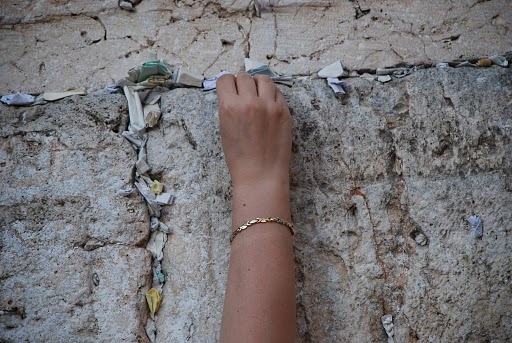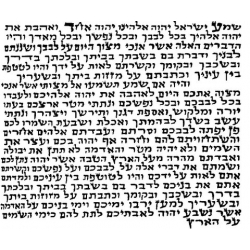Fragments of 1,300-year-old Torah scroll reunited
by Dan Slobodkin
The Israel Museum has pieced together two fragments celebrating the Jews’ exodus from Egypt that originally belonged to the same 1,300-year-old Torah scroll.
The Museum announced on Tuesday the exhibition of two extremely rare fragments of the same ancient Hebrew manuscript, separated for centuries and reunited for the first time. Following the 2007 presentation of the previously unknown Ashkar-Gilson Manuscript in the Shrine of the Book, scholars discovered that the mysterious fragment came from the same ancient scroll as the well-known London Manuscript.
Dating from the 7th or 8th century, this scroll of the book of Exodus comes from the “silent era” – the six-hundred year period from the 3rd through 8th centuries CE from which almost no Hebrew manuscripts have survived. Miraculously, two such fragments, originating in the same Torah scroll, found their way many years later into different collections.

Fragment of Song of the Sea from 10th- or 11th-century CE Torah scroll. Courtesy of Stephan Loewentheil Collection.
Alongside the reunited fragments, which include the Song of the Sea, which celebrates the Israelites’ safe crossing of the Red Sea, two other manuscripts containing the Song of the Sea are displayed: a section of the book of Exodus, found near the Dead Sea and dated to the late first century BCE, and a section of Exodus from a medieval Torah scroll.
In 2004, the Israel Museum learned of a fragment of an ancient Torah scroll, known as the Ashkar-Gilson Manuscript, housed by Duke University. The page, containing a section of the biblical book of Exodus (13:19–16:1), represents the earliest evidence of the Song of the Sea that conforms to the Masoretic text and format.
During its exhibition in the Shrine of the Book, the fragment attracted the attention of two Israeli scholars, Dr. Mordechay Mishor and Dr. Edna Engel. Close examination of the manuscript convinced them that the manuscript was nothing less than the continuation of the so-called London Manuscript, containing the passages of Exodus 9:18–13:2, which had been known for some 60 years. The two rare manuscripts had indeed been part of the same ancient scroll, which is believed to have been part of the Cairo Genizah, a vast depository of medieval Jewish manuscripts discovered in Cairo’s Ben Ezra Synagogue in the late 19th century.
The Ashkar-Gilson Manuscript is on display courtesy of Duke University, North Carolina and the London Manuscript is on loan from Stephan Loewentheil of New York.
The Israel Museum in Jerusalem is the largest cultural institution in Israel and is ranked among the world’s leading art and archeology museums. Founded in 1965, the Museum houses encyclopedic collections ranging from prehistory through contemporary art.
The Shrine of the Book exhibition, “Piecing Together the Past: Ancient Fragments of the Song of the Sea,” is on display through May.


